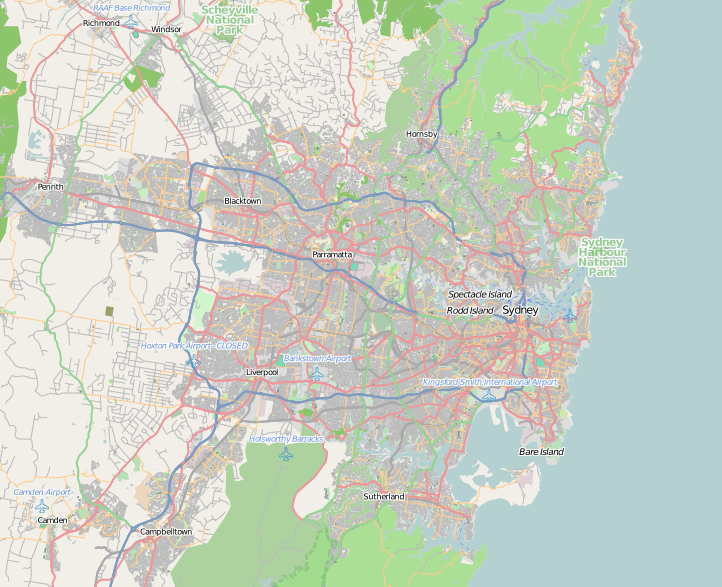Bethlehem College, Ashfield
Bethlehem College is an Independent Roman Catholic comprehensive single-sex secondary day school for girls, located in Bland Street, Ashfield, the Inner West of Sydney, New South Wales, Australia. The college was founded in 1881 by the Sisters of Charity.[2]
| Bethlehem College | |
|---|---|
 | |
 Bethlehem College, pictured in 2007 | |
| Location | |
 Bethlehem College Location in greater metropolitan Sydney | |
Australia | |
| Coordinates | 33°53′6″S 151°7′28″E |
| Information | |
| Former name | Bethlehem Ladies College |
| Type | Independent comprehensive single-sex secondary day school |
| Motto | Latin: Este Fideles (Be faithful) |
| Denomination | Roman Catholic |
| Established | 1881 |
| Oversight | Catholic Education Office, Archdiocese of Sydney |
| Principal | Paula Bounds |
| Chaplain | Michael Walsh |
| Employees | ~58[1] |
| Years | 7-12 |
| Gender | Girls |
| Enrolment | c. 660 (2006[1]) |
| Colour(s) | Purple and navy blue |
| Slogan | Este Fideles |
| Website | www |

| |
Students are easily identifiable by the amethyst and navy school uniform—fondly known around the inner western suburbs of Sydney as "Ribena Berries". The Sisters of Charity ran the college until 1991, when it became a systemic Catholic School run by the Catholic Education Office of the Archdiocese of Sydney.
History under the Sisters of Charity
Prior to 1953 Bethlehem catered for girls from Kindergarten through to the Leaving Certificate in Year 11. In 1953 the Junior (or Primary) School amalgamated with the Parish St. Vincent's Primary which was also run by the Sisters of Charity but which also catered for boys from Kindergarten to Year 2 (3rd grade). The boys then moved on to many other Catholic schools with the majority proceeding to De La Salle College Ashfield, located adjacent to Bethlehem.
Bethlehem College was known for many many years as Bethlehem Ladies College; the nuns of the Sisters of Charity placing great emphasis on ladylike behaviour & dress both in school as well as to and from school. School rules included wearing of hats and gloves outside school; no eating or drinking in the street; and definitely no talking to boys on the way to and from school. School rules which were strictly enforced by the Prefects.
Class sizes, at least until 1962, ranged from 80 children in kindergarten to Year 2, 60 girls from Year 3 to Year 6 and 50–60 girls in Years 7, 8 and 9 with quite small classes in Years 10 & 11 because society expected most girls to leave at the end of Year 9 (Intermediate Certificate) only the exceptional Academic Stream girls continued to Year 11 (Leaving Certificate) and then to teaching, nursing or rarely other university courses.
Education streams: The high school catered to students in two streams; the academic or science stream which offered choices from Physics, Chemistry, Geography, Mathematics I and II, Latin and French. Students could choose the business stream offering General Mathematics, Bookkeeping, Dress Making as well as the standard Religion, English and History.
Extras were offered in elocution and music.
Sports: The Combined Sisters of Charity Schools encouraged sports by an Annual Sports Carnival mostly at Leichhardt Oval and Annual Swimming Carnivals for each individual school (Enfield Swimming Pool for Bethlehem students until the Ashfield pool was built in the mid 1960s). Bethlehem coveted the Annual School Marching prize and drilled the girls accordingly. Bethlehem's greatest rival was St. Mary's Cathedral who Bethlehem felt had an unwarranted advantage in that the Carnival marching band was from the Cathedral boys school which often played for St. Mary's.
Girls were aligned in ranks of 5 from the tallest at the front to the smallest at the back. Summer uniform was worn at the Carnival (no matter what the weather) with the hem measured at 16 inches (41 cm) from the ground; this resulted in the tall girls having very long dresses and the short girls having very short dresses. Each girl's dress was measured by the Sisters with mother's often having to adjust the length of the dress until it measured exactly 16 inches from the ground.
Marching practice was often held daily when the girls considered it an excellent change for to be allowed to march to a nearby park for practice accompanied by the De La Salle marching band. "Normal" practice consisted of marching continuously around the playground to the strains of the loudspeaker blaring "A Life on the Ocean Wave", song of the Royal Marines and US Naval Academy.
The school had a basketball team and offered tennis as an elective. Entrants in the swimming and foot races were by student choice and no practice was offered.
Recreation: Until at least 1962 the College held regular dance lessons for the students from Kindergarten upwards often with a ball at Ashfield Town Hall or latterly at the College for the Senior Bethlehem girls and the De La Salle boys. Dancing was then Ballroom Dancing only. The Kindergarten children each learned the same dance year on year; having been paired they learned to recite the steps and perform them at the annual ball where the girl's dressed in white "communion dresses" and the boys dressed in white shirts, black ties and, no doubt, school trousers.
Swimming was a regular weekly event in the summer months when we would take over Enfield pool for the afternoon. We all enjoyed these relaxing afternoons which culminated in the Annual Swimming Carnival.
Bethlehem today
Multicultural Family: Bethlehem today boasts a student population with over 50 language backgrounds. Our diverse teachers reflect the student population and so are able to provide support or at least accommodate for students language needs. The college notably provides education for many refugee students which has led to the school's role in multiple refuge campaigns. The school also has a large Aboriginal and Torres Strait Island population who lead the welcome to country at school assemblies.
Accessibility: Bethlehem hosts a breakfast club for students so that no student is forced to go through the day on an empty stomach. The club is very popular among the students. The club relies on donations from the teachers, however, anyone willing to donate would be welcome too.
Students in need of the school uniform need only contact the office and will be provided with. Students are also able to pay it forward and donate their clothes to the school once they no longer need them.
Students unable to pay their fees will be covered by the Catholic board. A Catholic education should be available to all who want one.
Bethlehem also caters for students with learning disabilities to ensure the best possible education.
Subjects offered: Students in year 7 to 8 are taught English, Maths, Learning to Learn, PDHPE, Religion and Science. Students will alternate between Visual Arts, Textiles, Geography and History on a semester basis. In year 8, students will be able to choose between Italian or Japanese.
From year 9 to 10 students will be able to choose two electives from the following: Visual Arts, Textiles, Commerce, Sports, Technology, Italian, Japanese, elective History, elective geography (should enough classes be available). During this time students are encouraged to and given the opportunity to complete TAFE certificates from nursing to barista courses. These courses allow our students to enter the post-secondary world with greater qualifications and a set up for their future careers.
Bethlehem teaches the following subjects for the HSC should there be enough students to form a class. The minimum amount required is typically 9, should students find themselves interested in a course with limited numbers then students are able to pool with students at De La Salle or attempt long-distance ed.
|
Grounds
In 2017 Bethlehem received a government grant to update their outdated and overrun grounds. The Aikenhead building has existed since 1881 as the boarding for the nuns. Construction completed in late 2019, producing fantastic, state of the art facilities for the students to enjoy.
Notable alumnae
- Monica Attard – award-winning journalist, ABC News and current affairs journalist, presenter of Media Watch; awarded an Order of Australia for excellence in journalism
- Geraldine Brooks – author and journalist; Pulitzer Prize winner for her novel March, author of Year of Wonders and many other books, previously political correspondent for the Wall Street Journal in Bosnia, Somalia and the Middle East
- Angela D'Amore – Australian politician; elected as a member of the New South Wales Legislative Assembly, Member for Drummoyne[3]
- Barbara Perry – Member of the Legislative Assembly, Member for Auburn, Minister for Western Sydney, Minister for Juvenile Justice, Minister for Assisting the Premier on Citizenship
- Marcia Ralston – actress
- Debbie Spillane – sports journalist and broadcaster
References
- Bethlehem College Annual Report 2006 Archived 28 September 2007 at the Wayback Machine (accessed:16-08-2007)
- "College History". Bethlehem College. Retrieved 27 August 2010.
- "D'Amore, Angela – Biographical Entry" Australian Women's Archive Project